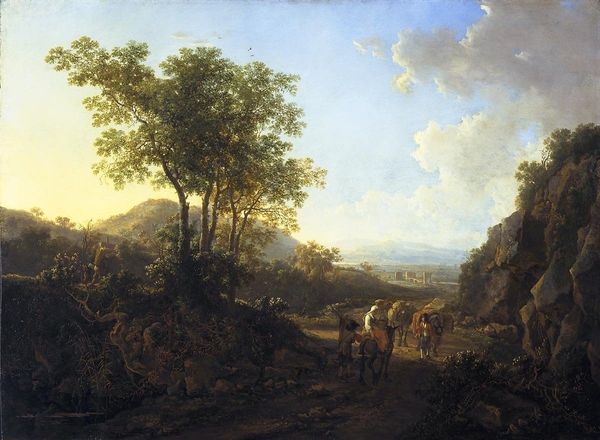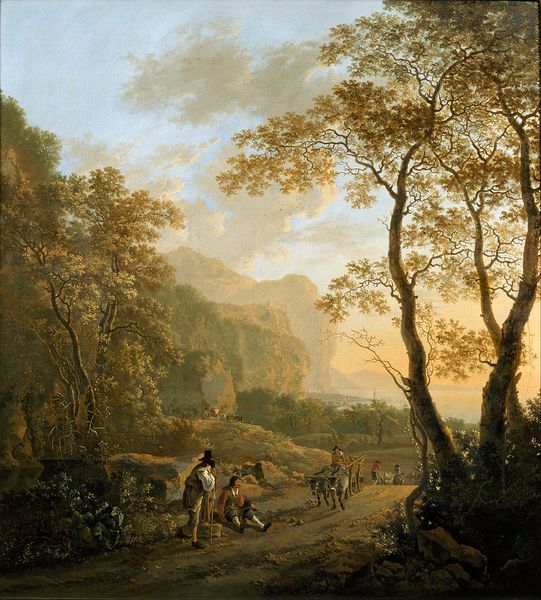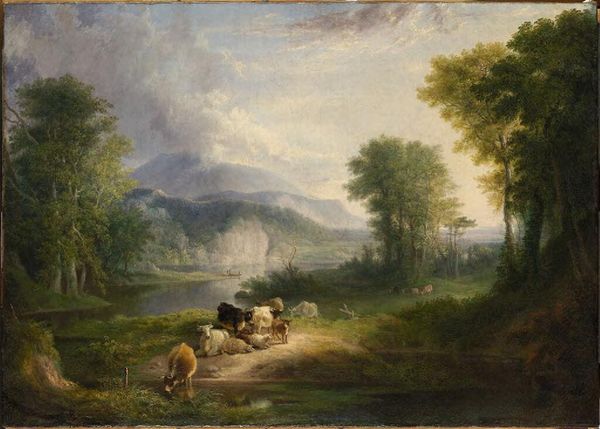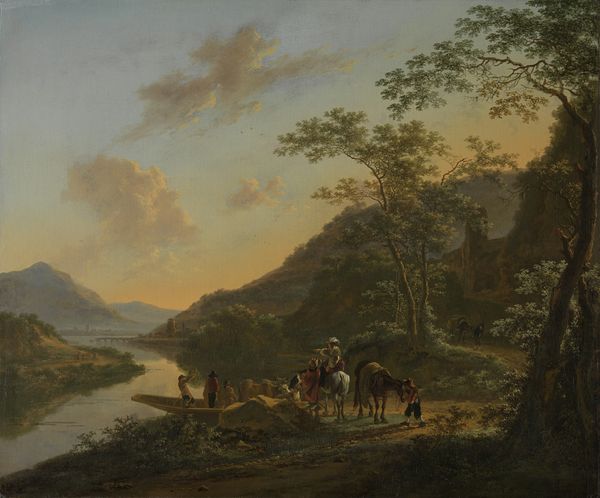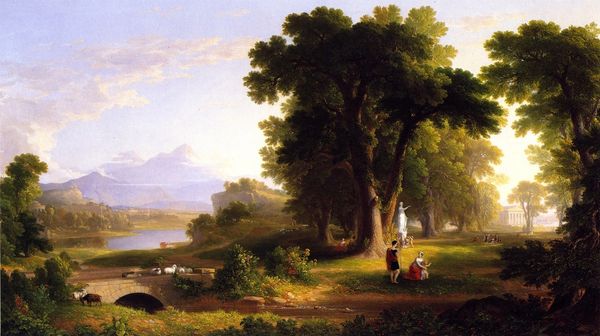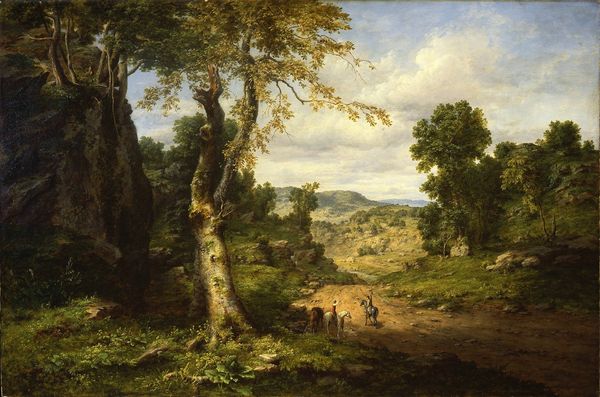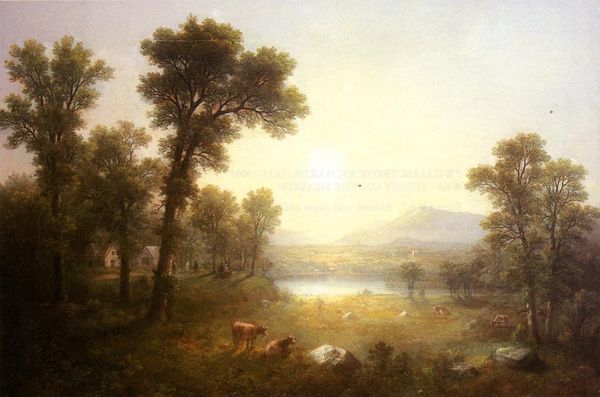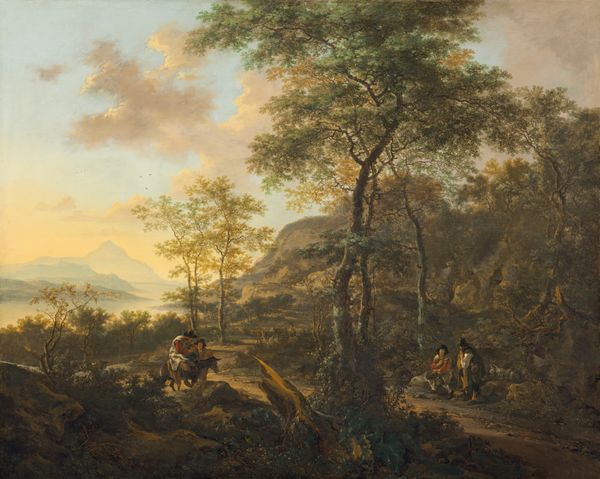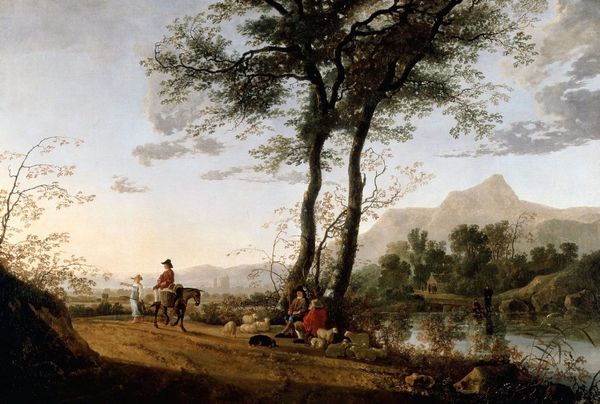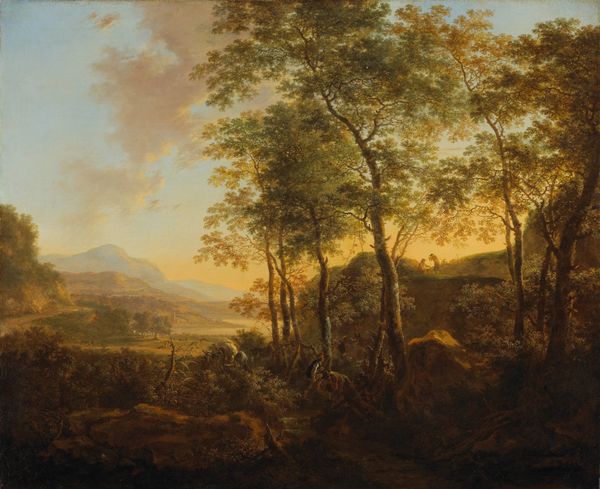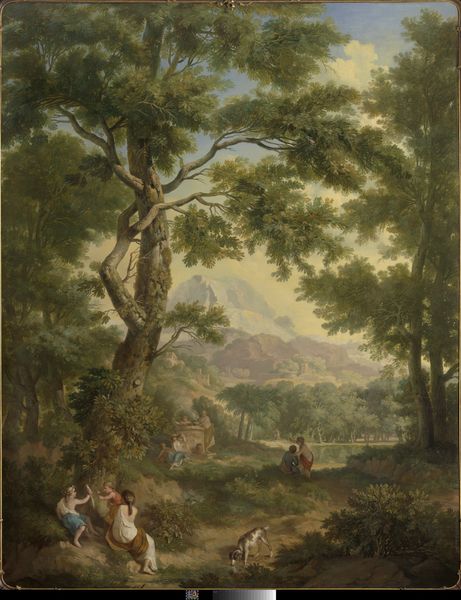
Copyright: Public domain
Editor: So this is "Italianate Landscape with Travellers on a Path" painted by Jan Dirksz Both in 1646, and rendered in oil paint. The overwhelming feeling I get is tranquility, and I'm struck by how detailed and yet softened the scene is. How do you interpret this work? Curator: I’m drawn to the materiality of this piece. Think about the pigments available in the 17th century: the ochres, the umbers, the lead whites, painstakingly ground and mixed with oil. The resulting luminosity is achieved through labor, not just divine inspiration. Editor: That's an interesting point; I hadn't considered that! So, you're saying the value isn't just in the representation of the landscape but in the tangible effort put into creating the pigment itself? Curator: Precisely. Look at how Both uses those earthy tones, almost celebrates them. It suggests a close relationship between the artist, the land depicted, and the resources it provides. Were these materials locally sourced, contributing to the landscape’s cultural identity? Consider the economic realities of the time too – the price of pigments, the patronage system... these all played a part in shaping what we see. Editor: I see. So, reading it as a Materialist, the painting becomes a record not just of a place, but of a process – the process of making both the image and the materials that constitute it. Curator: Exactly! And it urges us to question who had access to these resources, and what that says about power dynamics within Dutch society at the time. Editor: I hadn't considered all those layers! I'll never look at landscape paintings the same way again. Curator: That's the beauty of engaging with art from a Materialist perspective; it shifts the focus from the idealized image to the grounded reality of its creation.
Comments
No comments
Be the first to comment and join the conversation on the ultimate creative platform.
